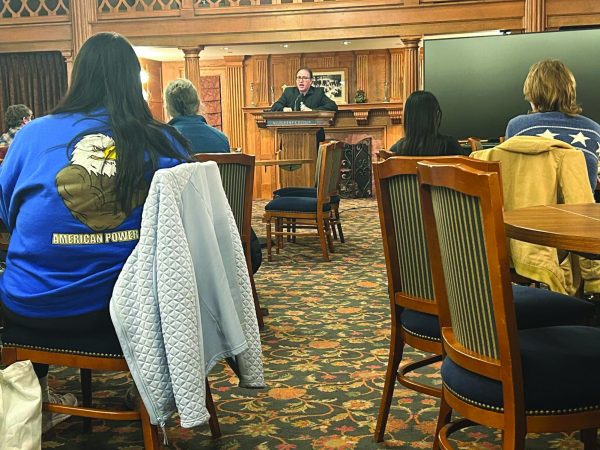Speilberg’s latest film ‘Bridge of Spies’ gives history a dramatic twist
From “Jaws” to “Jurassic Park” followed by the Indiana Jones franchise and “Lincoln,” director Steven Speilberg has captured the attention of millions and created films that have stood the test of time.
His latest, “Bridge of Spies”, is yet another masterful piece that is acted, produced and directed to perfection.
“Bridge of Spies” travels back in time to the American-Soviet Cold War and the remarkable attempts at recovering an American student and a captured American pilot in exchange for an arrested KGB, the former Russian secret police, spy.
This thriller begins in Brooklyn, New York and follows a British-born Soviet by the name of Rudolf Abel (played by Mark Rylance).
Abel is soon swept up by law enforcement officers and arrested on the suspicion that he is a Soviet spy. Seeking honorable representation, the U.S. government hand picks James Donovan (Tom Hanks), a Brooklyn insurance lawyer, to defend Abel. The case however, is obviously a lost cause as Abel is most certainly going to be strapped to the electric chair sooner rather than later.
As the film progresses, tensions between the Soviets and Americans rise and so does the tension among Abel, Donovan and the public.
Donovan quickly becomes a villain in the eyes of the general public as he vigorously defends Abel’s constitutional rights, no matter how despicable the allegations of spying may be. Donovan recognizes the irony that Abel is acting as any American would do if he were asked to protect U.S. interests in spying on the Soviet Union. He also understands the reality of the unseen underbelly of international affairs. Faced with the inevitable guilty verdict, Donovan argues that Abel should not face death for espionage but rather be imprisoned as a potential bargaining chip held in reserve should an American be caught and imprisoned in the USSR. Donovan is successful in convincing a judge of the wisdom of this approach and is soon vindicated.
Soon after sentencing, in a quick and effortless transition of film, an American reconnaissance jet manned by Francis Powers is shot down by the Soviets. Powers is captured.
This catastrophic political mess now faced by the Eisenhower administration is compounded when an American student, Frederic Pryor, is captured by the East German government as the Berlin Wall is being built. In attempts to avoid international embarrassment, the American government turns back to James Donovan and tasks him with the negotiation of an exchange of prisoners.
This juicy plot thickens as Donovan soon finds himself on the streets of East Berlin firmly committed to the idea of a two-for-one trade for the prisoners.
This widely-publicized nonfiction tale is expertly crafted by Speilberg and exquisitely portrayed by Tom Hanks and his fellow actors.
The film embodies the struggle for power both Americans and Soviets faced during the Cold War.
Although this film did not put up record-breaking numbers its opening weekend, it can be listed at the top of Speilberg’s illustrious résumé and is a must see for this fall.






